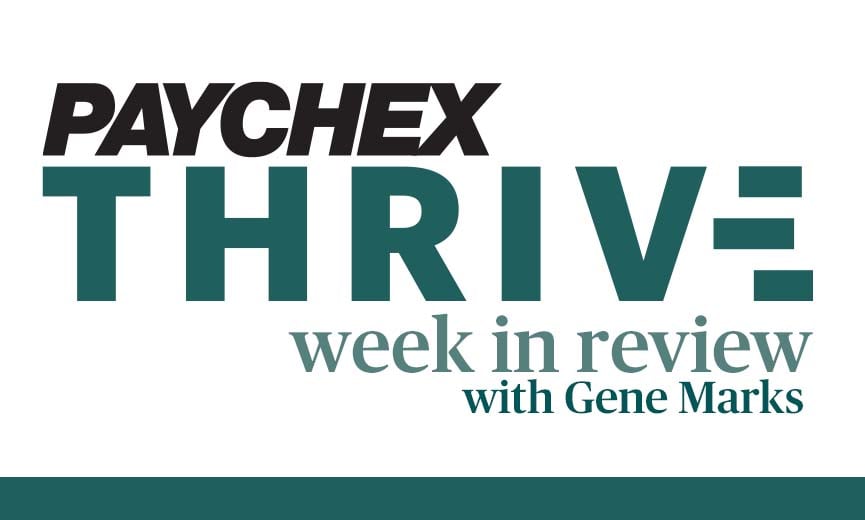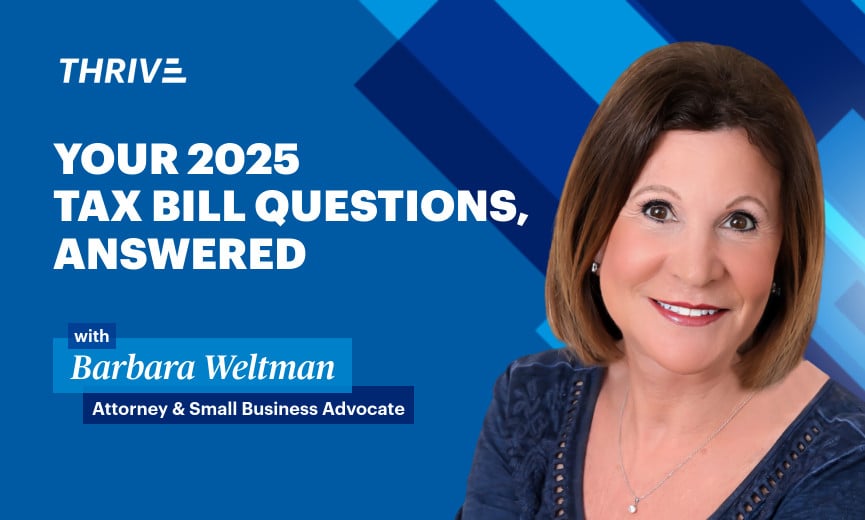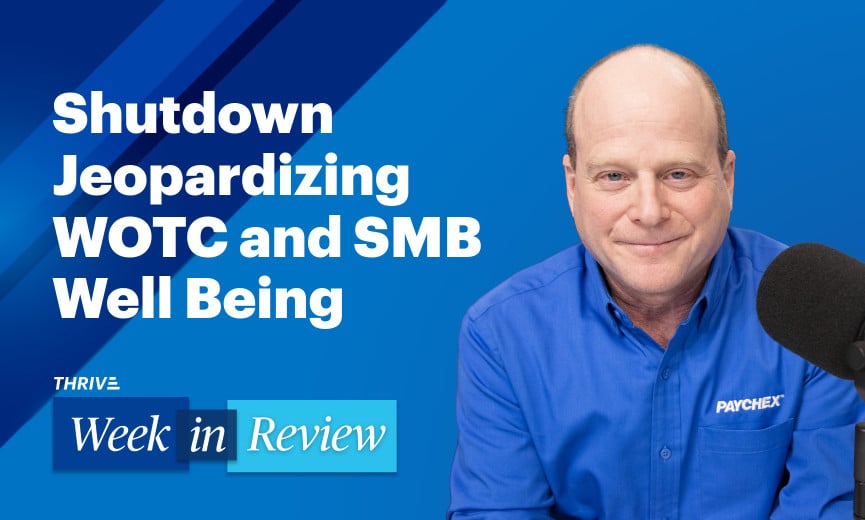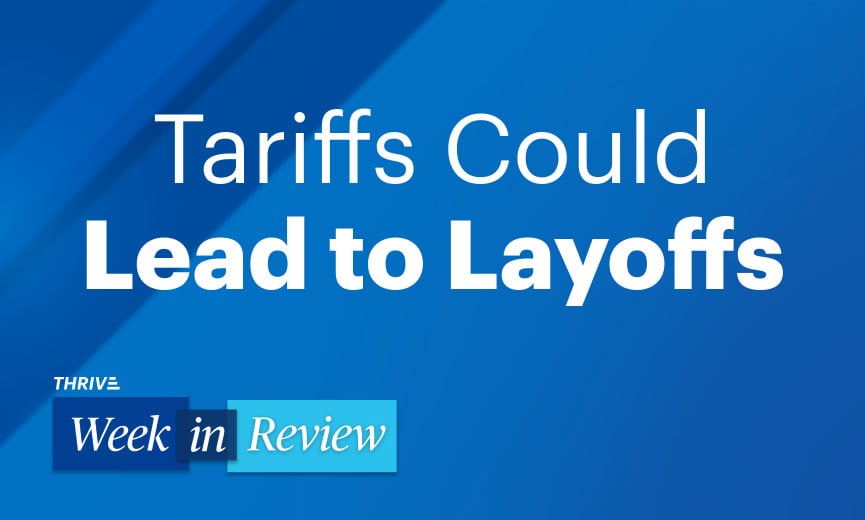- Thrive
-
Season
4Episode85
Job Growth Flat, 529 Plan Rollovers, and a Proposed Rule on Overtime

Podcast •

Summary
Job growth and hourly earnings growth have flattened in recent months, according to the Paychex | IHS Markit Small Business Employment Watch, with North Carolina tops in job creation and Washington state in hourly age growth. Gene Marks says look to 529 plans as an offering for employee benefits because the no-penalty rollover that exists for leftover funds under SECURE 2.0. And it’s back — a proposed OT rule — and businesses should be aware of the potential impact. Listen to the podcast.
View Transcript
Hey, everybody, it's Gene Marks, and welcome to another episode of Paychex Week in Review podcast, a part of our THRIVE podcast. This is the weekly podcast where I look at some news that impacts your business and give you a little bit of insights and advice on dealing with that news. So, let's get right to it.
We're going to start with wages and employment job growth for the month of August. Our friends at Paychex — hey, the sponsor of this podcast — they released their Paychex | IHS Markit Small Business Employment Watch in August. Looking back at the prior month’s-worth of jobs, and they found that the National Small Business Jobs Index measure, which measures the rate of small business job growth in the U.S., is essentially flat right now. It only decreased like a very, very small percentage in August. It was very, very small.
Meanwhile, the same report found that an hourly earnings growth rate of 3.9% among U.S. small businesses is also unchanged in August from July and below 4% for the second consecutive month. So, recap as to how this impacts your business, just so we know, is that jobs themselves, employment added by small businesses, is kind of flat, which means that small businesses themselves are not adding more jobs than they were in previous months. For your hourly workers on an hourly or annualized basis, the earnings have increased about 4%. So, you can consider that out for your hourly, you know, for your hourly workers.
John Gibson, who is the Paychex president and CEO, said that the data indicates America's small businesses are adding workers at a sustained but modest rate regarding hourly earnings. Last month, Paychex reported a growth rate below 4% for the first time since 2021. Seeing that trend continued, he is saying, this month is an encouraging sign that wages are normalizing along with overall inflation.
A couple of smaller tidbits: Despite slowing for the sixth consecutive month, North Carolina is once again the top-ranked state for small-business job growth, overtaking Texas, believe it or not. At its 2023 peak, the state of Washington leads states in hourly earnings growth — 4.87% — which again is higher than the 4% rate that I mentioned earlier. However, in the state of Washington, weekly hours worked growth in that state continues to rank last among the states and has been negative for the past two years. So, even though the hourly rate is higher, the actual hours worked are very much below what most states are actually recording.
So, bottom line is, according to Paychex, employment growth flat, hourly wage is up about 4% year over year, but they're also showing modest gains, if not just potential small decreases, as well. That's where employment and wages stand right now.
Let's move toward retirement plans. There was a report in the Wall Street Journal this past week about 529 plans. Now, I don't know if you have them for yourself or if you offer to your employees, but you really ought to think about it, and here's a reason why. A 529 plan is where you can put after-tax money away in a fund and it can grow tax free as long as the money is used for education, higher-education expenses, including books, tuition, and other related expenses or private school education or Catholic school education. There's a whole bunch of different types of education that can qualify for 529 accounts.
So, you put the money away — it's after tax, but then it grows tax free. You can do that when your kids are at an early age — it grows tax free — and then you can use that to pay for their education. Now, in the past, if the if there was any money left over at the end of the day, it would be taxed. In other words, you know, if you're going to be pulling it out, you would have to pay a penalty.
But, no longer, thanks to SECURE 2.0, which passed last December, you're now allowed to take any money left over in your 529 account and roll it over to a Roth account, meaning that it can continue to grow tax free, which you can use any time in the future, really for any purpose.
So, it's a pretty big benefit to put money away. So, in summary about this news: If you don't have a 529 account for your kids, your grandkids, you know anybody else that you want to help with their education, you can do that. You should open one up. You should open one up and to make this available for your employees, as well. Let people put after tax money away, let it grow tax free, and then they can take it out to use for those educational expenses in the future.
Now, they don't have to worry if there's any money left over. They can roll that money over into a Roth account and then it won't be fined or penalized in any way and can continue to grow tax free. So, that's pretty cool stuff.
Finally, some not so cool stuff coming from the Department of Labor. They just announced this past week that they're going to be raising the exempt salary range for employees to get overtime. Right now, it's approximately $35,000 a year. That range has been proposed will go up to approximately $55,000 a year.
What does that mean? It means you've got if you've got certain employees that are salaried, they're not supervising anybody, they have certain job titles that apply to them — there are certain rules that you have to abide by — but if they fall into that category, those employees under this proposed rule, if they make anything up to $55,000, you will have to pay them overtime and that is something that you're going to have to consider. Again, right now, anything over about $35,000, you would have to pay them.
Now it's going to be going up, which means there's a lot of employers that are going to be affected by this, including you. In fact, some analysts think that about 3.6 million workers will be affected by this new rule.
So, you might want to start thinking about this because this is on the table and it's potentially going to change the overtime rules and increase your costs. How many of those workers do you have now that are between $35,000 and $55,000 a year that you're not paying overtime, that you may need to be paying overtime in the future?
What can you do about them? Can you change your salary structure? Can you turn them into overtime, hourly workers? These are things to consider. And by the way, don't try to get away with anything because it's not like the Department of Labor is going to go after you. But your employees, they read the news, they get the Internet, if they think they're entitled to overtime and you're not giving it to them, they're going to report you to the Department of Labor, and if that's the case, that's the kind of PR that you don't want to have.
My name is Gene Marks and you've been listening to the Paychex THRIVE Weekend Review podcast. If you need any advice or tips or would like to suggest a guest, please visit us at payx.me/thivetopics.
Thanks again for listening. I'll be back next week with a few items in the news that impacts your business and mine and some thoughts about what to do about those news items. Thanks again. We'll talk to you soon. Take care.
This podcast is property of Paychex, Inc. 2022. All rights reserved.

 Apple Podcast
Apple Podcast Spotify
Spotify iHeartRadio
iHeartRadio








